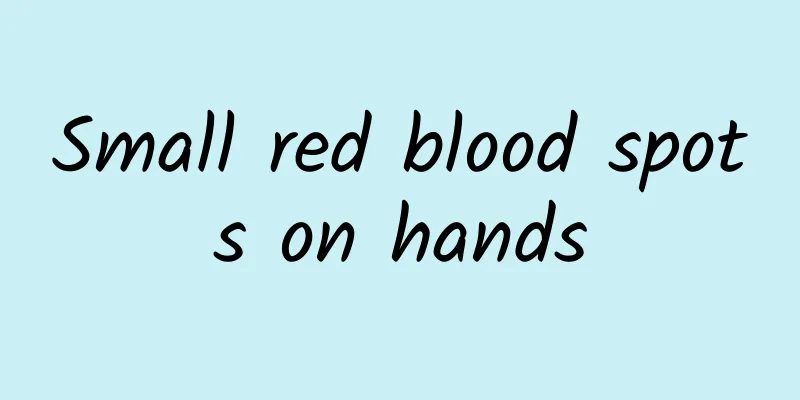The dosage of the traditional Chinese medicine Evodia rutaecarpa is based on the condition of the disease.

|
The traditional Chinese medicine Evodia rutaecarpa has many medicinal values. It is mainly used to dispel cold and relieve pain, especially in treating headaches, dysmenorrhea, abdominal pain, and vomiting. The dosage must be controlled well. It must be used under the doctor's instructions to exert its efficacy. 1. To treat hiccups caused by kidney qi, when kidney qi rises from the abdomen to the throat, causing the patient to have reversed qi and be unable to vomit, or hiccups may occur dozens of times, without the patient being able to breathe: one liang each of Evodia rutaecarpa (fried with vinegar), tangerine peel, and aconite (peeled). Grind into powder, make into balls the size of walnuts with flour paste. Take 70 pills with ginger soup each time. (Rencuntang Experience Prescription) 2. To treat vinegar heartache, when the vinegar gas attacks the upper body like strong vinegar: one dose of Cornus officinalis. Boil three cups of water for seven minutes and drink it all at once. Even if it is strong, you must force it. ("The Ministry of War's Hand Sacrifice Recipe") 3. To treat acid regurgitation after food and weak and cold stomach: Evodia rutaecarpa (soaked seven times in water and roasted) and dried ginger (fried) in equal parts. Grind into powder and take one qian with soup. (Sheng Hui Fang) 4. To treat liver fire: 6 liang of Coptis chinensis and 1 liang or 1/2 liang of Evodia rutaecarpa. Grind the above ingredients into powder and make into water pills or steamed cake pills. Take fifty pills with white soup. (Zuojin Pills, also known as Huiling Pills, in Danxi's Heart Method) 5. To treat vomiting with chest fullness, dry retching and drooling, and headache: one liter of Evodia rutaecarpa, three liang of ginseng, six liang of ginger, and twelve jujubes. Take the above four ingredients, add five liters of water, boil and take three liters, take seven he of the warm liquid three times a day. 6. Evodia rutaecarpa and dried ginger both have the effect of warming the middle and dispersing cold, and are used to treat symptoms such as cold stagnation in the middle burner, cold pain in the abdomen, etc. The two medicines are often used together. However, dried ginger can still warm the upper part of the body, warm the lung meridian, transform fluid and relieve cough; Evodia rutaecarpa can also warm the lower part of the body, warm the liver to treat abdominal pain caused by cold hernia, assist kidney yang to treat cold diarrhea, and warm the blood to treat amenorrhea. 7. Evodia rutaecarpa, Coptis chinensis, and ginger all have antiemetic effects. However, Evodia rutaecarpa warms the liver and treats the bitter vomiting caused by liver cold invading the stomach, while ginger can warm the middle and treat the vomiting of water caused by stomach cold. |
<<: Different methods of processing Evodia rutaecarpa
>>: Are the side effects of Jinkui Shenqi Pills serious?
Recommend
Precautions for using mannitol
When using mannitol, you should also be aware of ...
What are the symptoms of earwax infection?
The ear is the most important organ of the human ...
How to cook salted crab
Crab is an animal that lives widely in rivers, la...
The efficacy of mugwort water bath
As a traditional Chinese medicinal material with ...
Primary Sjögren's syndrome
Primary Sjögren's syndrome is a disease of th...
What causes numbness in legs when sitting on toilet
Now that people's living standards have impro...
Why can't I hold back my ejaculation?
Ejaculation is a basic term in biology. From a hu...
Nerve compression, blurred vision
Some elderly people have cerebrovascular diseases...
How many days can the gauze of cesarean section incision be removed?
After the cesarean section, the incision will be ...
What are the tips for allergy relief after applying plaster?
It is summer now and the hot weather is unbearabl...
What are the benefits of drinking black wolfberry for women
The nutritional value of black wolfberry is relat...
How to detoxify after taking hormone drugs
Hormone drugs are a common type of drug in our da...
Can I eat beef if I have a toothache?
When toothache occurs, it is necessary to seek ti...
What to do if venous return is poor
Venous return refers to the process in which the ...
The efficacy and function of red corn
Red corn is very different from ordinary grain cr...









